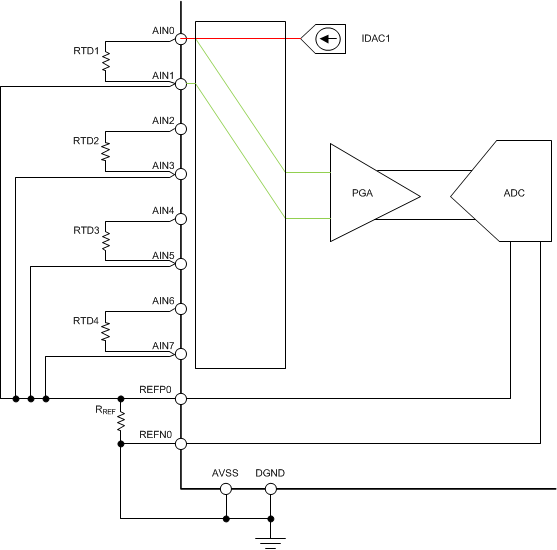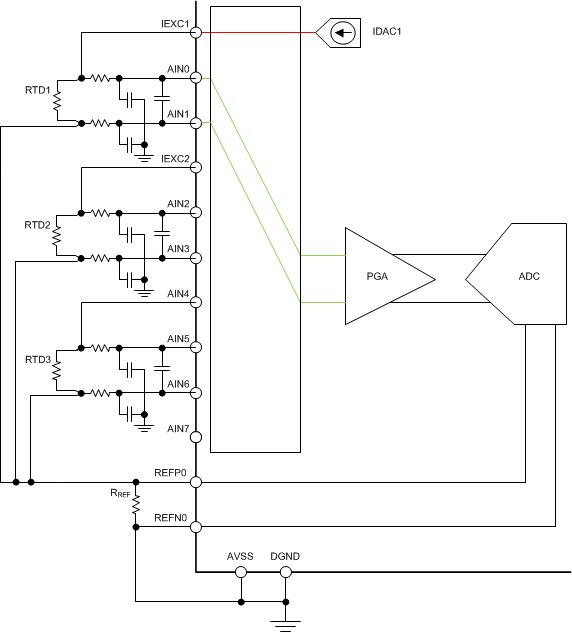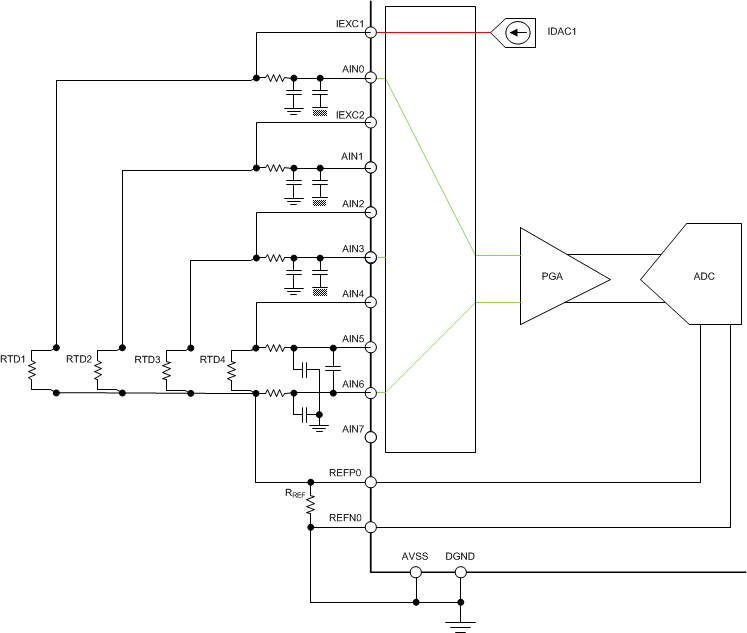Other Parts Discussed in Thread: ADS1247, ADS124S08
Tool/software: WEBENCH® Design Tools
Is it possible to connect 4 RTD (PT100) in 2-wire-mode to the ADS1248 ? As it is an 8-channel device, it should be possible.
The WebBench only allows 2 PT100 and seems to leave the other channels unused. I would expect this restriction from the ADS1247 (4 channels), but not from the ADS1248.
Temperature range for the PT100 is 0 to 550°C
Any ideas ? Sample-Designs welcome !




